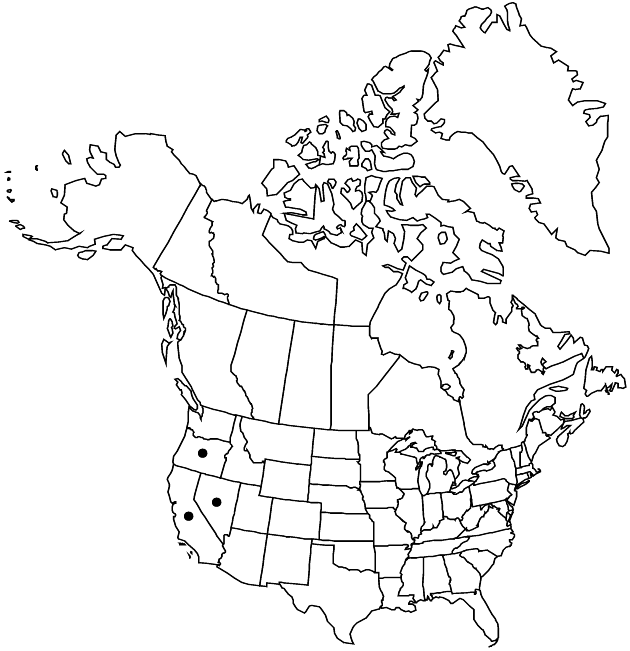Eriophyllum lanatum var. achilleoides
Man. Fl. Pl. Calif., 1118. 1925.
Perennials (sometimes flowering first-year; ± taprooted). Proximal leaves usually mostly alternate (opposite in ne California); blades oblanceolate to ovate, 1–2 (–3) -pinnately lobed (lobes usually ± triangular), ultimate margins often toothed (teeth 1–4, 1–2 mm), often crispate, usually revolute, abaxial faces woolly, adaxial less so or glabrate. Heads usually 3–8 per array, sometimes borne singly (n California, s Oregon). Peduncles mostly 3–10 cm. Involucres usually 8–10 mm diam. Ray-florets usually 9–13, sometimes 0; laminae usually 6–9 (–16) mm. Cypselae 2–3 (–3.3) mm; pappi (0.3–) 0.5–0.9 (–1) mm. 2n = 16, 32.
Phenology: Flowering Apr–Jun.
Habitat: Dry sites, chaparral, forests
Elevation: 30–1300 m
Distribution

Calif., Nev., Oreg.
Discussion
In northern California, a taxonomically perplexing series of intermediate populations connects vars. arachnoideum, achillioides, and grandiflorum. Polyploiids characterize the regions where the varieties meet. Putative arachnoideum-achillioides hybrid derivatives, compared to var. achillioides, have smaller, broader, thinner, and more shallowly lobed leaves, and shorter pappi. Putative achillioides-grandiflorum hybrid derivatives, compared to var. achillioides, have longer peduncles, larger heads (often borne singly), and longer ray laminae. Variety aphanactis (2n = 32), an Inner Coast Range local, rayless variant, is probably of achillioides-grandiflorum parentage. Varieties achillioides, arachnoideum, grandiflorum, and lanceolatum overlap in northwestern California and southwestern Oregon. L. Constance (1937, p. 89), referring to the Klamath area, observed “that it seems quite impossible to assign many specimens definitely to any one subspecific category.” Variety achillioides passes gradually through northern California and southern Oregon populations into var. leucophyllum west of the Cascade Mountains. Oregon specimens with ternately lobed leaves and larger heads often borne singly (Eriophyllum ternatum Greene) are part of the continuum.
L. Constance (1937, p. 87) had var. achillioides, although “uncommon in the Sierra Nevada, occurring as far south as Mariposa County.”
Selected References
None.